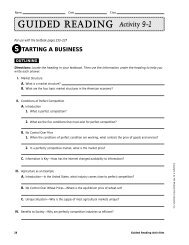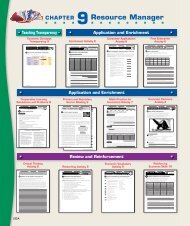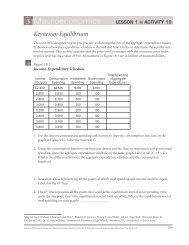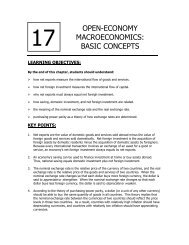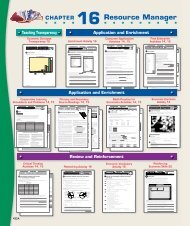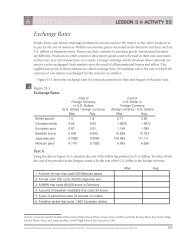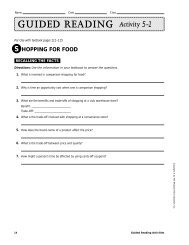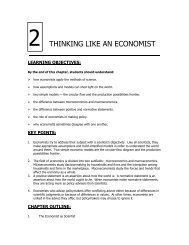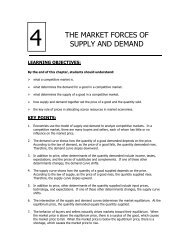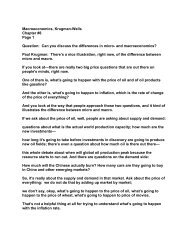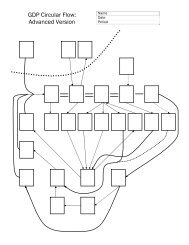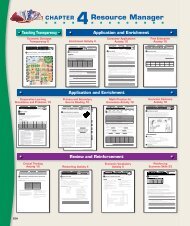Create successful ePaper yourself
Turn your PDF publications into a flip-book with our unique Google optimized e-Paper software.
2. If the world price is greater than the domestic price, Isoland shouldexport steel; if the world price is lower than the domestic price, Isolandshould import steel.a. Note that the domestic price represents the opportunity cost ofproducing steel in Isoland, while the world price represents theopportunity cost of producing steel abroad.b. Thus, if the domestic price is low, this implies that theopportunity cost of producing steel in Isoland is low, suggestingthat Isoland has a comparative advantage in the production ofsteel. If the domestic price is high, the opposite is true.II.The Winners and Losers from TradeA. We can use welfare analysis to determine who will gain and who will lose if freetrade begins in Isoland.B. We will assume that, because Isoland would be such a small part of the marketfor steel, they will be price takers in the world economy. This implies that theytake the world price as given and must sell (or buy) at that price.C. The Gains and Losses of an Exporting Country1. If the world price is higher than the domestic price, Isoland will exportsteel. Once free trade begins, the domestic price will rise to the worldprice.2. As the price of steel rises, the domestic quantity of steel demanded willfall and the domestic quantity of steel supplied will rise. Thus, withtrade, the domestic quantity demanded will not be equal to the domesticquantity supplied.PriceExportsSupplyPrice after tradeWorld PricePrice before tradeDemandQuantitydemandedQuantitysuppliedQuantity



